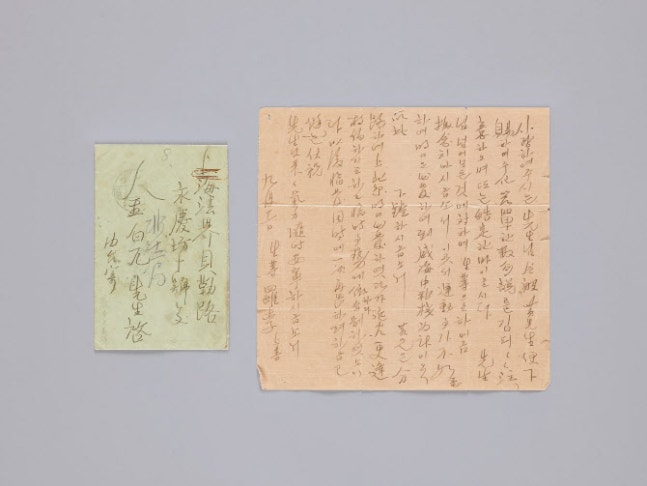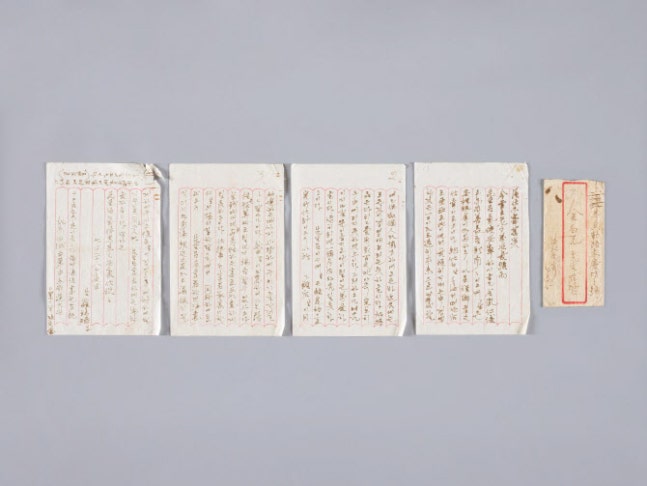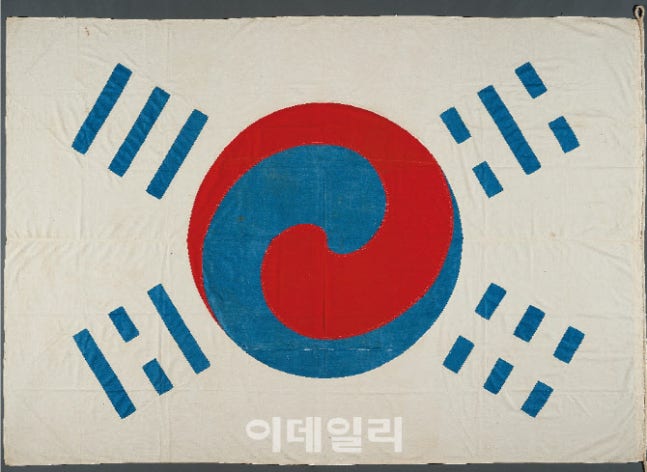Letter sent to Kim Gu and others while engaging in the independence movement as a member of the Independent Righteous Army, expressing the will for independence. To be publicly displayed at the National Museum of Korea from the 26th., ‘[Edaily, By Jang Byungho] Seven letters from independence activist Na Seok-joo (1892-1926), who threw bombs at the Joseon Bank and Oriental Development Company and took his own life in 1926 while active in the Independent Righteous Army, will be publicly displayed for the first time.’,
,
,
|
|
| A letter to inform Kim Gu of the determination as a member of the Independent Righteous Army. (Photo: National Museum of Korea) |
|
, ‘The National Museum of Korea announced that in commemoration of the 79th Independence Day, starting from the 26th, they will open a special exhibit titled ‘The Unextinguished Flame Toward Independence: Na Seok-joo’ in the permanent exhibition hall, showcasing the national registered cultural heritage ‘Na Seok-joo’s Letters’ to the public.’,
,
, ‘While the content of Na Seok-joo’s letters has been previously disclosed in research papers, this is the first time they will be publicly displayed. The exhibit includes two letters to Kim Gu, four letters to fellow Independent Righteous Army comrade Lee Seung-chun (Ewha Ik, 1900-1978), and one letter to Hwang Haegwan (Hwang Ik-soo, 1887-?).’,
,
, ‘In 1921, Na Seok-joo exiled to Shanghai and worked as an aide to Kim Gu in the Provisional Government of the Republic of Korea. He joined the Independent Righteous Army with the goal of achieving independence through righteous struggles. On December 28, 1926, he threw bombs at the Joseon Bank and Oriental Development Company in downtown Seoul and took his own life, aiming to publicize his resistance against Japanese imperialist colonial rule.’,
,
,
|
|
| A letter to inform Kim Gu of the plan for bomb throwing. (Photo: National Museum of Korea) |
|
, ‘The letter “Informing Kim Gu of the Bomb Throwing Plan” (July 28, 1925) reveals Na Seok-joo’s determination to carry out the bombing plan in Seoul and seeks Kim Gu’s support and secrecy regarding the plan. Being from Hwanghae Province, Na Seok-joo first met Kim Gu during his teenage years in Hwanghae Province and maintained a lifelong connection. On the same day, he also wrote a letter urging Lee Seung-chun to participate in the plan and sent it to Kim Gu as well.’,
,
, ‘In the letter “Informing Lee Seung-chun of the Target for Bomb Throwing” (August 4, 1925), Na Seok-joo designated the targets for bombing as representative institutions of national exploitation, including the Government-General of Korea, Oriental Development Company, Joseon Bank, and Joseon Bank. He emphasized that targeting the nearby Oriental Development Company and Joseon Bank together would have a higher chance of success.’,
,
, ‘In the letter “Informing Lee Seung-chun of the Necessity of the Independent Struggle” (August 25, 1925), Na Seok-joo’s determined resolution is revealed as he expresses his readiness to die for the cause in Korea rather than recklessly dying in China.’,
,
,
|
|
| A letter to inform Lee Seung-chun of the necessity of the independent struggle. (Photo: National Museum of Korea) |
|
, ‘In addition to the above, his letters contain reports of acquiring bombs and a revolver, efforts to secure a return passage, difficulties due to lack of funds for return, and his unwavering determination to carry out the plan. The tablets displaying the full original text and explanation of the 7 letters from Na Seok-joo can be viewed in the exhibition hall.’,
,
, ‘On another note, the National Museum of Korea will once again exhibit the oldest Korean flag, a treasure called the ‘Denny Flag,’ in the Joseon Dynasty room to commemorate Liberation Day. The ‘Denny Flag’ was granted to the United States diplomat Owen N. Denny (1838-1900) by King Gojong.’,
,
, ‘Director Kim Jae-hong stated, “Through the letters that have been publicly disclosed this time, we can glimpse into the detailed process of Na Seok-joo’s preparation for the independence movement and his strong determination. We hope this exhibition will serve as an opportunity to honor an independence activist who sacrificed his life for the country and reflect on the meaning of liberation.”‘,
,
,
|
|
| The treasure ‘Denny Flag,’ the oldest Korean flag in Korea. (Photo: National Museum of Korea) |
|
,
,
,
Visited 2 times, 1 visit(s) today





